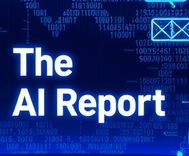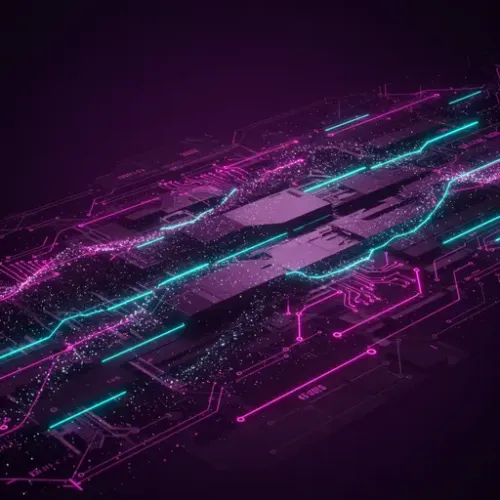Teachers embracing artificial intelligence encourage literacy in its educational use

The AI Report
Daily AI, ML, LLM and agents news
Navigating the AI Frontier in Education: A Guide for Students, Teachers, and Parents
Artificial Intelligence (AI) is rapidly transforming every sector, and education is no exception. As AI tools become more sophisticated and accessible, the question for educators and learners isn't whether to use them, but how to use them ethically and effectively. This new technological landscape presents both immense opportunities and significant challenges, demanding a balanced approach to harness its power while mitigating its risks.
Unlocking Efficiency and Enhanced Learning with AI
Dr. Deepti Tagare, an expert working closely with AI at the University of Texas at San Antonio (UTSA), highlights AI's potential to revolutionize the classroom. For teachers, AI acts as a powerful assistant, streamlining tasks such as:
- Lesson Plan Generation: AI can quickly churn out ideas for lesson plans, saving valuable time.
- Material Development: Crafting learning materials and in-class activities becomes more efficient.
- Creative Edges: While teachers retain the final say, AI provides a wellspring of creative ideas, freeing educators to focus on customization and student needs.
For students, AI can serve as an invaluable learning companion, akin to a personal tutor. David Vela, an AP World History teacher at Thomas Jefferson High School, champions this perspective. He advises students to think of AI as a "study partner," not a shortcut. Instead of asking for a direct answer, students should engage with AI by asking deeper questions:
- "How did you come to that conclusion?"
- "Explain this step in detail."
- "Tell me the 'who, what, when, where, and how' behind this concept."
This approach fosters genuine learning and critical thinking, helping students "get stronger and better by going through the process," much like exercising a muscle.
The Ethical Tightrope: Dangers of Unchecked AI Use
Despite its promise, a critical awareness of AI's limitations and ethical pitfalls is paramount. Both Dr. Tagare and Mr. Vela caution against "blind trust" in AI. AI is not flawless; it makes mistakes, and these errors can have serious real-world consequences, especially in academic settings.
An excessive dependency on AI poses a significant risk of academic dishonesty. When students simply "copy and paste" AI-generated content without understanding the material, true learning is bypassed. This not only undermines their educational journey but also hampers their ability to retain crucial information in the long term.
Cultivating AI Literacy: A Path Forward
To navigate this evolving landscape, "AI literacy" is essential. This means equipping students with the knowledge to understand AI's capabilities, its limitations, and when its use is appropriate or inappropriate. Teachers play a pivotal role in this education.
For Teachers: Embracing and Guiding
It's crucial for educators across all subjects to:
- Familiarize Themselves: Understand AI's evolving capabilities, staying abreast of new developments.
- Recognize Limitations: Be aware of potential pitfalls like incorrect or biased output.
- Spot Dishonesty: Teachers can identify AI-assisted cheating through various indicators. For instance, students who typically write concisely might suddenly produce lengthy, perfectly structured essays. Uncharacteristically perfect grammar, punctuation, and sentence construction for a given grade level can also be red flags. While AI tools can mimic a student's style, they often maintain an unnatural perfection in mechanics.
- Implement Clear Consequences: While initial instances of misuse might warrant a warning and a conversation, repeated academic dishonesty should lead to stricter consequences. These could include lower grades, requiring students to redo assignments, or, in severe cases, more formal disciplinary actions like class retakes or even expulsion. The ultimate goal is to ensure students genuinely engage with the learning process.
For Students: Smart Usage for Real Growth
Your brain is like a muscle – it gets stronger with effort. Don't let AI do all the heavy lifting. Use it to:
- Deepen Understanding: Ask probing questions to explore concepts from multiple angles.
- Verify Information: Cross-reference AI-generated facts with reliable sources.
- Stimulate Ideas: Use it as a brainstorming partner, but develop your own arguments and analysis.
- Practice Critical Thinking: Evaluate AI's output, question its conclusions, and refine your own thought process.
For Parents: Becoming Tech-Fluent Guides
Parents too have a vital role. Dr. Tagare advises parents not to be "adverse to technology" but to "go all in" to understand how AI works and interact with it themselves. By understanding its drawbacks, parents are better equipped to guide their children away from problematic uses. Being "a friend of technology" empowers parents to make informed decisions and provide effective oversight, rather than shying away from it and leaving children to navigate its complexities alone.
The Future of Learning is Collaborative
The integration of AI into education is not about replacing human intellect but augmenting it. By embracing AI with a strong foundation in literacy and ethics, we can empower a new generation of learners who are not just digitally fluent but also critically discerning. This collaborative approach – where AI serves as a tool, teachers as guides, students as active learners, and parents as informed supporters – is the key to unlocking the full potential of education in the AI age.

The AI Report
Author bio: Daily AI, ML, LLM and agents news
